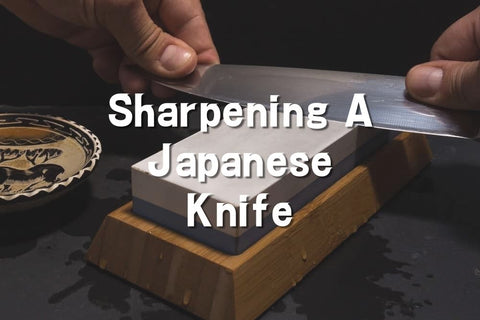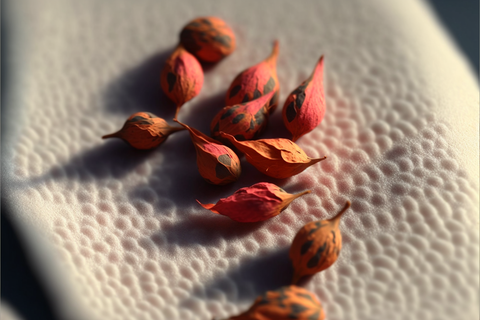
Japanese Tatami Mats, the History of the Flooring Material of Noblemen; Why it's Making a Comeback in Modern Homes
What are Tatami Mats?
Tatami mats are the traditional rice straw mats that originated in Asia and have been used most recognizably in Japan. They are made by weaving long thin strips of rice straw, then cutting them into pieces for final use. Tatami mats can be placed on the floor to sleep on, to sit on for meditation or as a bed to sleep on during warmer weather.
Tatami mats were originally used to cover the dirt floor in the traditional Japanese residences. It was not until 1644 when they began using tatami mats as seating surfaces and sleeping areas for samurai families and high-ranking servants in Japan's castles, palaces and other important residences.
A number of Japanese homes have less space for people to live in so instead they purchase furniture that can be moved around. Futons, for example, are bedding that is spread out during the night and put away during the day. Since they are meant to be only used at night, they are laid directly onto the floor. Tatami mats help give the floor some extra cushion to make sleeping more comfortable.
The tatami mats are much more comfortable with a futon. Not only are they softer but it is easier to sleep on them. Futons can be laid out and slept on without waking up sore. Tatami are also common in two other areas in Japanese homes. An area where children will play and Kyakuma (visitor room) or Chashitsu (茶室, "tea room"). Tatami is a great choice for a kids’ play area flooring. It’s soft and springy, but still firm enough to be a great play surface. Just be careful not to spill anything on it as they can be a pain to clean. Kyakuma can still be found in some homes in Japan. Originally, they were used to welcome guests, but have since become a place where you can chat over tea and snacks while sitting on the floor with comfortable tatami mats.
Tatami Mats' Advantages Over Other Types of Flooring
Japanese tatami mats are renowned for their ease of use, flexibility, durability, and affordability.
The tatami mat is the Japanese flooring that has been used for centuries now. The popularity of tatami mats has now reached the western world as well. Tatami mats are comfortable, stylish, and durable. They are the perfect flooring choice for modern homes.
Since tatami mats are a traditional Japanese flooring material, they are made of straw and rice husks woven together with a cotton fabric backing. This makes them very eco-friendly as they come from renewable resources and there is minimal processing during the process of making tatami. Tatami mats have many advantages over other types of flooring like hardwood floors or carpet:
- Tatami mats provide better air circulation and reduce the amount of dust inside the room.
- Tatami mats can be laid across easily on top of existing flooring, which is not as easily done with carpet or hardwood floors.
- These mats make for excellent sound insulation and they will not get stained like carpets can get dirty or stained from pet hair even when it is vacuumed on a regular basis. Although it is best to be careful with liquids as the liquid can get into the mat. It may dry harmlessly due to the excellent airflow, but if, for example, a sweet drink was spilled, this could attract insects inside the tatami and that is difficult to clean.
What are the Disadvantages of Tatami Mats?
The tatami mat is not as easy to clean as a hardwood or vinyl floor. The tatami mat is also not as durable. While they can last quite a while, they will likely need to be replaced sooner than other types of flooring. If you are looking for a flooring that can be cleaned easily and won't wear out easily, look elsewhere.
Another disadvantage of tatami mats are the inflexibility in size. Even in Japan, depending on the area, you will find that tatami are only made in one size, and that size may not match other tatami sizes. It can be difficult to find a mat that will fit your room size, especially if you have an irregularly shaped room.
What Are Tatami Mats Made From?
Traditionally, the basic structure of tatami is simple, comprising doko (base), omote (cover), and heri (border).
The base (tatami doko) is made of multilayered rice straw, tightly fastened, and compressed. The cover (omote) is natural igusa (rice rush). Tatami consists basically of a base, omote and heri edges crafted in to a rectangle. While this is a very simple explanation there are numerous other intricate elements used.
Now there are various new materials to make tatami but the basic idea hasn’t changed for centuries. Here are some features of the base, omote and heri.
Over the generations Tatami has been used the cover and borders have largely remained the same, but the core has changed over time. Different tatami will be comprised of different materials, from compressed straw, wood chips, or in modern times a foam core.
Why Japanese Tatamis are Making a Comeback in Modern Living Spaces
Tatamis are also the perfect balance between warm and cool in the winter and summer months. Although tatamis are a traditional Japanese flooring material that have been around for centuries, and are soft, comfortable, and durable, they are less common than they once were, but It is no wonder why they are making a comeback in modern living spaces with their benefits to owning one!
- Tatami mats provide an extra layer of insulation when it is cold at night time
- They can be used to sit on comfortably or even a bed in case of an emergency when you don't have one
- Children love playing on them because they resemble the grassy fields outside
- You can always air them out to keep them fresh!
Conclusion: Why You Should Choose Japanese Tatamis for Your Home
Japanese Tatami mats are indeed popular in the home. They are usually made of rice straw, with a thin layer of rush on top, and are flexible to accommodate any kind of floor. In modern times, their core may be a either wood chips, a foam, or a mixture of the two.
So, if you’re looking for a natural and environmentally-friendly way to make your home warm and more comfortable Japanese Tatami mats will make your house warmer in the winter, cooler in the summer and more comfortable as they offer comfort from the floor up.
We offer our own folding tatami mats that we ship worldwide. You can find them here!





